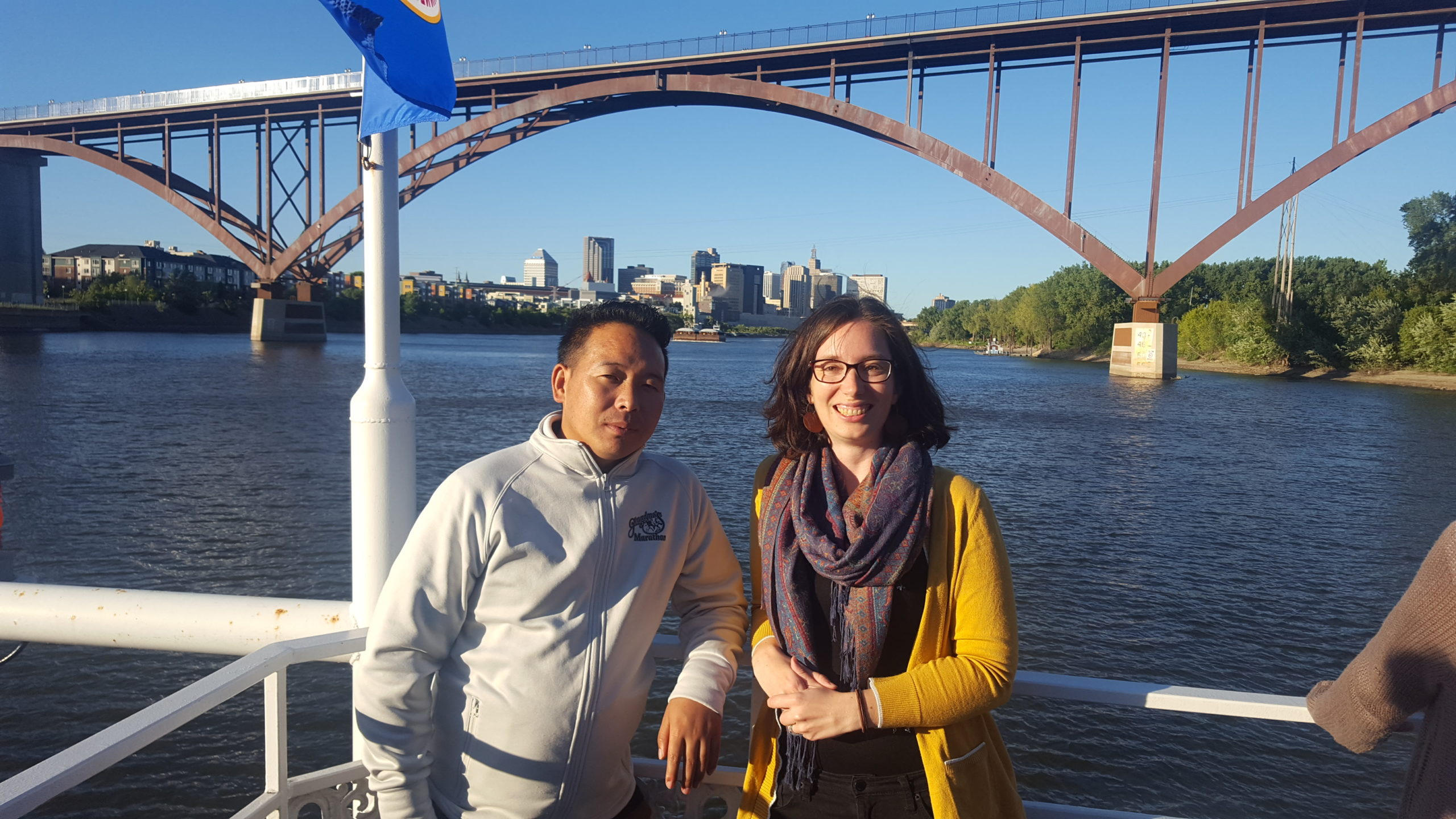 Meet Jambay, faculty of Watershed Hydrology, Statistics, and Forestry at College of Natural Resources, Royal University of Bhutan and visiting researcher at Freshwater.
Meet Jambay, faculty of Watershed Hydrology, Statistics, and Forestry at College of Natural Resources, Royal University of Bhutan and visiting researcher at Freshwater.
Jambay joins Freshwater for four months as a Fellow in The Community Solutions Program (CSP) sponsored by the U.S. Department of State with funding provided by the U.S. Government and supported in its implementation by IREX, a global development and education organization. CSP is a professional leadership development program for the best and brightest community leaders worldwide, with more than 6,000 applicants for just 80 positions this year.
Fellows complete a four-month fellowship with a U.S. nonprofit organization or local government agency. They return home after the program with new skills to apply to their problems through a community action project they design while in the U.S. Since Freshwater is all about community solutions to vexing water problems, this was meant to be.
Already, Jambay has joined us for agroecology tours in upper reaches of the Minnesota River watershed and a boat tour of the Lower Minnesota River, has been immersing himself in understanding challenges and opportunities for groundwater in Minnesota, and is helping us think a little differently about water. And he’s only just begun.
What Jambay’s working on at Freshwater

Jambay has joined Carrie Jennings and Jen Kader on Freshwater’s research and policy team as he studies why the springs that supply drinking water in Bhutan are drying up and what watershed management strategies can help preserve that water in his small Himalayan country. His hypothesis is that the increase of tree cover is using more groundwater.
Freshwater has designed a mutually beneficial work plan to have Jambay design a monitoring project for a small, forested watershed using instruments developed at the University of Minnesota and other inexpensive open-source devices that can be deployed remotely. These include sensors for water level, groundwater temperature, water pressure, and wind speed.
He will then learn to run an integrated, surface water-groundwater model and what data inputs it requires. Jambay is attending courses and seminars at the University to hone his understanding of the tools, and visiting the University’s Marcell Forest Research Station to learn how forests impact stream flow and groundwater recharge.
Jambay will use the model in a watershed here in Minnesota, like the Nemadji River Watershed, a steep, forested watershed in the north, or the Straight River watershed, an area of focus for our groundwater study (described elsewhere in this newsletter). Additionally, he will be cataloging and reviewing water reuse efforts in Minnesota, gleaning options that could be applicable in Bhutan.
When Jambay finishes the program in November, he will return home with an understanding of what it takes to monitor and model a watershed in Bhutan, albeit much steeper and more remote (not to mention the cobras, leopards, and Himalayan bears!), extend the supply of drinking water, and address the depletion of the groundwater Bhutan relies on for drinking.
2021 Update
The pandemic has not slowed Jambay down on implementing the work he designed with Freshwater. Although Carrie and Jen have not been able to join him there as planned (they received State Department support to travel), he is mapping springsheds with the help of a local nonprofit in Bhutan. His efforts have made their national television news!